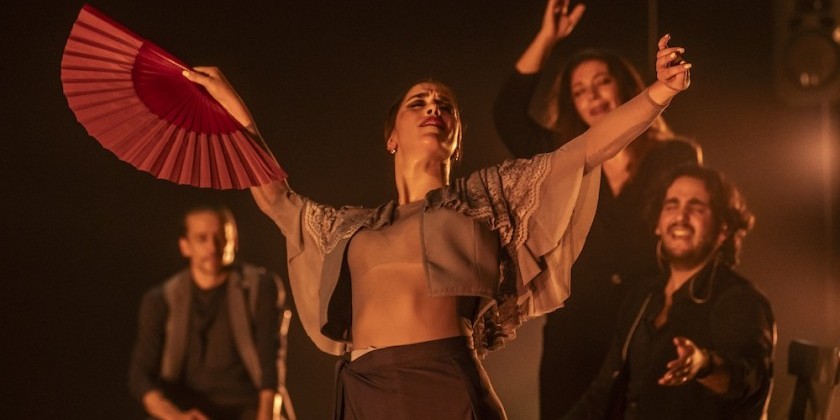IMPRESSIONS: New York City Ballet’s New Combinations with Kyle Abraham, William Forsythe, and Justin Peck

February 3, 2019
David H. Koch Theater
Choreography: Kyle Abraham, William Forsythe, and Justin Peck
Music: New York City Ballet Orchestra
Music Director: Andrew Litton
Costumes: Gianni Versace (Herman Schmerman), Reid Bartelme and Harriet Jung (Principia), Giles Deacon (The Runaway)
Baby Boomers have been called the worst generation, smug folks who moved from the Age of Aquarius to ‘80s yuppiedom with no appreciation for how the deck was stacked in their favor. Generation X is known for being slackers who consider irony and detachment moral imperatives. As for Millennials, don’t get anyone over the age of forty started. They’re responsible for everything from killing mayonnaise to the declining fertility rates. Plus, if they stopped eating avocado toast, they could build wealth or, at least, get off their parents’ couches.

Joseph Gordon in William Forsythe’s Herman Schmerman: Photo Credit Erin Baiano
New York City Ballet’s New Combinations program, intentionally or not, gives the stage at the David H. Koch Theater to a choreographer from each of these generations. The pieces by William Forsythe, Kyle Abraham, and Justin Peck — a Boomer, a Gen Xer, and a Millennial, respectively — have many merits and faults over which to argue. Yet, regardless of their critical reception, the more interesting aspect is how these choreographers, intentionally or not, manipulate ballet to evoke an entire generation’s ethos.
Forsythe is a celebrated choreographer, but Herman Schmerman (1992) is not a piece for the history books. Derivative and brimming with tropes, it looks phoned in. To Thom Willems’ annoying, clanging score, five dancers whack through extreme leg extensions and flex their ankles and wrists. At times, the cast glares and struts like they’re jaded models at a fashion show.

A slithery, witty pas de deux that Forsythe tacked on a year later fares better. Tiler Peck and Tyler Angle slink around each other, their limbs swiping like rapiers. At one point, Peck exits and then returns in a daffodil-colored skirt. Angle, smirking, does the same, eliciting surprised giggles from the audience.
This season marks the first time in twenty-five years that Herman Schmerman has been performed in its entirety (usually NYCB excerpts the pas de deux). That seems about right for this dated paean to excess where virtuosity masquerades as virtuousness.
Principia, a world premiere and Resident Choreographer Justin Peck’s seventeenth work for NYCB, appears to be set in heaven: lovely, guileless, and a little dull. Drenched in silvery-blue light, performers in silvery-blue costumes kneel in a clump. Exultant, one and then the others spring up. More clumps appear throughout, gathering momentarily before fading into the swirls of flat-footed pirouettes and skimming jumps.

To Sufjan Stevens’ tepid score, which burbles from bells to horns, Peck layers multiple pathways over the space. Crowds of dancers sweep downstage and upstage, stage right and stage left, in circles and in lines. Even among this teeming stage-scape, the cast locates opportunities to interact with each other. They hold hands and make eye contact — not just looking at another person, but seeing them — until they, too, are swept away in a silvery-blue wash.
With much of its imagery dissolving before it has time to register, Principia feels like it’s been made for Instagram: a fast-moving scroll of hazy filters and #livingyourbestlife moments.

Urban street dance and ballet aren’t the most natural of bedfellows, but Kyle Abraham makes a strong case for exploring their potential. In The Runaway (2018), dancers punctuate shoulder ripples and hip juts with stone-cold classicism. The fusion works best when the ballet steps (spurts of piqué turns and entrechat sixes) mirror hip-hop’s punchy rhythms and compact kinesphere. Larger, more elegant actions like a lunging fourth position literally stretch too far across the tightly clustered beats.
The soundtrack, which runs the gamut from Kanye West’s twisted “I Thought About Killing You” to Nico Muhly's "Quiet Music," might shock the older, deep-pocketed donors. Yet it’s exciting to hear music inside a theater that people listen to outside of it. Abraham reflects rap’s swagger in the spacing, which hugs to the stage’s middle and back, occasionally busting to the front before retreating again.

Taylor Stanley in Kyle Abraham’s The Runaway; Photo Credit Paul Kolnik.
The Runaway opens with a solo for Taylor Stanley (a Millennial with a very old soul). He oscillates his body like a sine wave before floating crossed arms down and over himself. Later, he whip stitches upstage, lost and haunted.
During these mesmerizing minutes, he displays a prickly vulnerability. He positions his body in croisé, or he gazes down, or most poignantly in an art form that's knowingly performative, he turns his back on the audience. Yet, for all the disaffection, he’s still fighting the good fight. Sometimes, the voices least heard are the ones most full of hope.
New York City Ballet’s Winter Season runs through March 3. New Combinations will return on 2/8, 2/9, 2/27, and 3/2. Tickets and more information can be found here.















